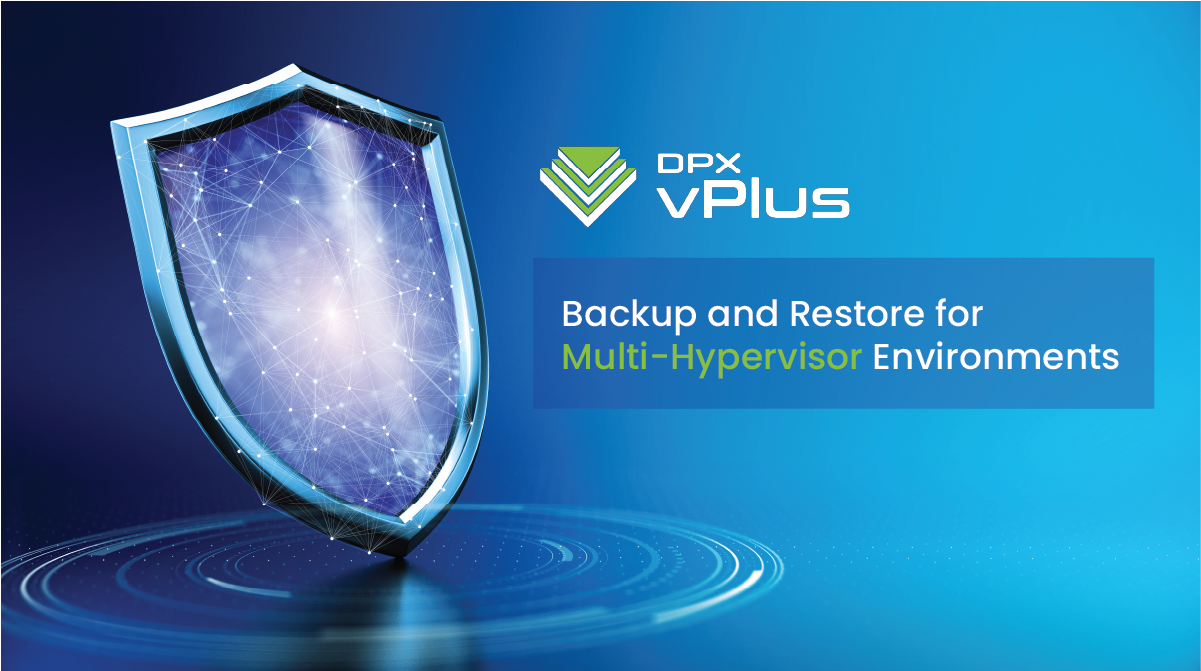Backup and Restore for Multi-Hypervisor Environments

As container technology and Kubernetes, specifically, continues to be considered the future of virtualization, the fact is that the traditional hypervisor market continues to grow. According to Maximize Market Research, by 2027 the hypervisor market is expected to reach a value of $4.45 Billion, a CAGR (Compound annual growth rate) of 29.78% from 2020. As has been the case for a decade, VMware continues to be the leader in market share, at 56.8% (a number that is down from 65.4% in 2008). Still, an interesting trend is beginning to take shape: increasingly, small and midsize organizations are leaving VMware’s high costs behind and are transitioning to several alternative open VM platforms.
Diversifying Hypervisor Environments
As these alternative hypervisors continue to develop and become more “enterprise ready,” many organizations find themselves with virtual environments consisting of multiple different hypervisors. There are many reasons why organizations may choose to diversify their virtual environments across different and open hypervisors:
- Limit the cost of “enterprise” hypervisors like VMware, Hyper-V, and Amazon EC2 by hosting lower-priority workloads on open VM options.
- Integration limitations for backup software and other applications.
- Test servers, sandbox environments, and offline servers can be run on open VM alternatives.
- End-user preferences – KVM vs. Red Hat framework, Windows vs. Linux OS, etc.
Backup for Multi-Hypervisor and Open VM Environments
One of the difficulties for these diverse environments is ensuring that data across these multiple virtual environments are protected and available for quick recovery after a disaster. Most legacy data protection solutions on the market narrow the focus of their solutions to a few of the more popular hypervisors. This limitation often causes end-users to hesitate to store stateful workloads on these unsupported hypervisors or prevents them from taking advantage of more cost-effective alternatives altogether. With DPX vPlus, however, open VM backups are not an issue.
DPX vPlus for Open VMs provides a trustworthy and convenient backup and restore solution for companies that enrich their infrastructure with multiple virtualization platforms. With the versatility of both DPX and DPX vPlus, businesses don’t need to worry looking for a new backup solution for their commercial workloads that use open hypervisors like KVM, RHEV/RHV, oVirt, PowerKVM, and Proxmox, or their edge computing solutions like Scale Computing. From a single pane of glass, DPX vPlus users can backup and restore open VMs from all these and more open hypervisors using on-demand jobs and scheduled backup/recovery SLAs.
Summary
Until recently, companies were hesitant to rely on alternative hypervisors for their production/stateful workloads, especially across multiple virtual environments. The uneasiness of trusting an unknown, open-source VM option prevented end users from taking advantage of the benefits of a heterogeneous virtual environment. But as the need for flexibility grows and the cost for hypervisors like VMware and Hyper-V continue to rise, more companies are taking the open VM platform leap.
We understand that every server virtualization platform has its pros and cons. DPX vPlus for Open VMs allows end users to take advantage of the pros of multiple open VMs or hypervisors by providing a centralized data protection system for heterogeneous virtual environments.
If you would like to learn more about DPX vPlus for Open VMs, you can request a live demo or even get a 30-day trial copy to try it yourself. You can also watch the below pre-recorded demonstration of DPX vPlus backup and recovery for Open VMs. We’ll be happy to help you set things up.

